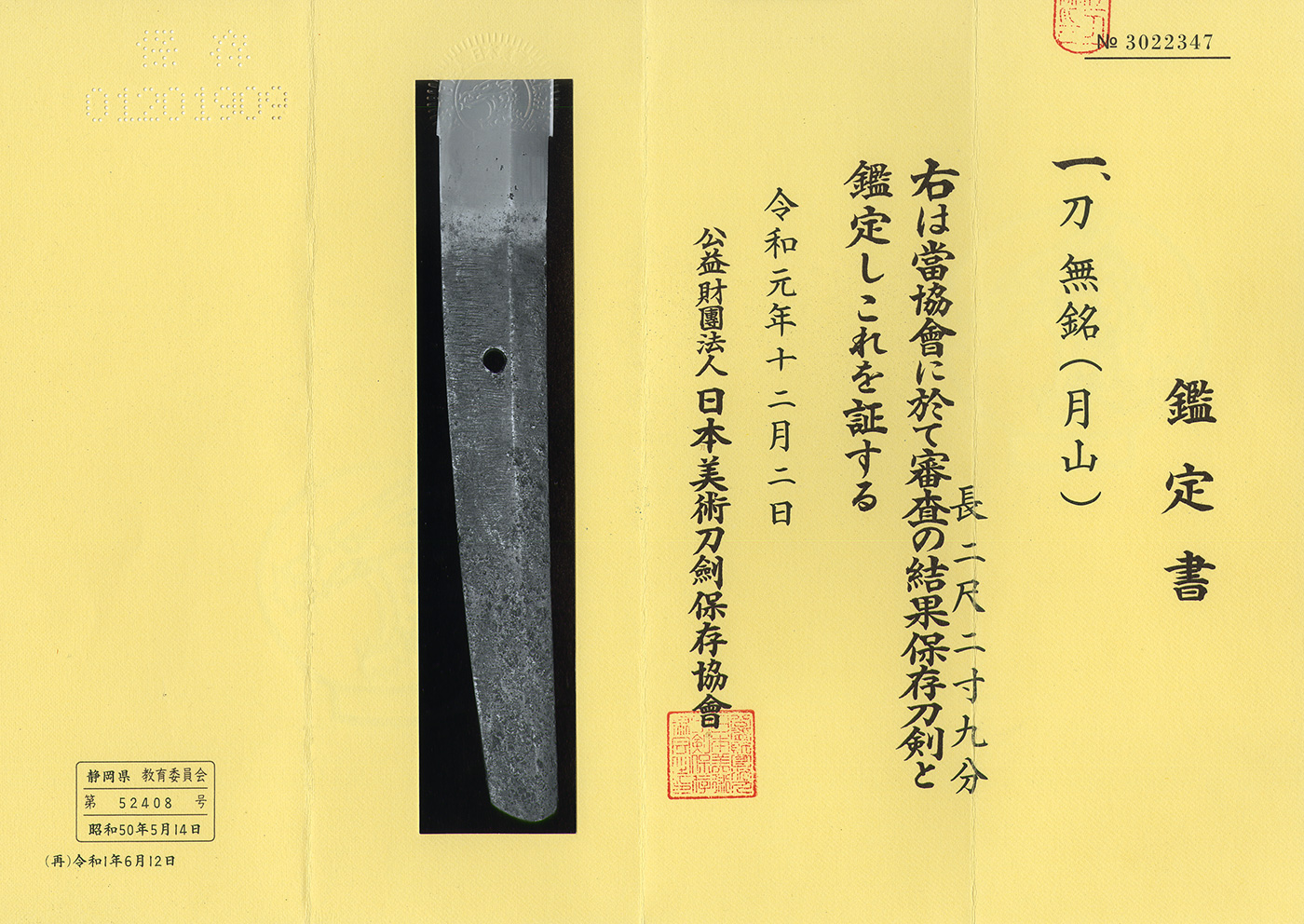Ordering number:24729
Katana in Shirasaya with Koshirae (NBTHK Hozon Token)
Signature: Mumei (Gassan, 月山)
We divide 4 sections for each sword as Saijyo Saku, Jyojyo Saku, Jyo Saku and Regular Saku.
This sword is ranked as Jyo Saku among the works of Mumei (Gassan).
Habaki: Single-layered gold-covered habaki.
Blade Length: 69.4 cm (27.32 in)
Curvature: 2.4 cm (0.94 in)
Mekugi Hole: 1
Width at Base (Motohaba): 3.16 cm (1.24 in)
Width at Tip (Sakihaba): 2.54 cm (1.00 in)
Thickness of Rim (Kasane): 0.69 cm (0.27 in)
Sword Weight: 775 g
Era: Mid to late Muromachi period
Shape: The blade has a wide body, relatively thin thickness, deep curvature, and a long kissaki.
Jigane: Well-forged ko-itame hada with prominent ayasugi-hada pattern.
Hamon: Nie-deki gunome-midare with visible ayasugi-hada.
Boshi: Midare-komi, turning back in a small round (ko-maru).
Features:Gassan is known as "Oshu Gassan" and is characterized by the appearance of ayasugi-hada in the jigane.
The Gassan school spans from the Kamakura period to the end of the Muromachi period.
Though the method of creating these blades once died out, in the late Edo period, Gassan Sadakazu succeeded in reviving it.
There were also smiths during the mid-Edo period who achieved the Gassan-hada pattern.
Gassan smiths continued to research and preserve the name and tradition of their ancestors.
This sword shows a beautifully executed ayasugi-hada and is an excellent work demonstrating the distinctive Gassan characteristics.
Koshirae:
Tsuba: Mokko-gata pure-shilver tsuba with chrysanthemum flower engraving. Signature: Yamashiro Ju Mitsunaga
Menuki: Dragon motif engraved on shakudo
Fuchikashira: silbver Ishimeji (stone-like texture) pattern
Saya (Scabbard): Black lacquered saya with silver fittings
Aoi Art’s Comment:Gassan was a swordsmith from Dewa who was active from the Kamakura to Muromachi period.
During the Edo period, the tradition nearly died out, but a few individuals continued the craft in a limited way.
In the late Edo period, the Gassan tradition was revived through detailed study of the original Gassan-hada.
Gassan Sadakazu became especially renowned for this revival.
Even today, the techniques of the Gassan school are passed down.
NBTHK Hozon Certificate
Aoi Art Estimation Paper
Whole Oshigata
Price:850,000JPY
Order Form
Related Items:
 Tachi:Gassan Sadakatsu Kinsaku.(NBTHK Hozon Token)
Tachi:Gassan Sadakatsu Kinsaku.(NBTHK Hozon Token)
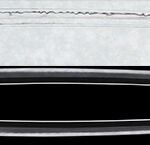 Katana:Osaka Ju Gassan Sadakatsu (Kao) (NBTHK Tokubetsu Hozon Token)
Katana:Osaka Ju Gassan Sadakatsu (Kao) (NBTHK Tokubetsu Hozon Token)
 Katana: Osaka Ju Gassan Sadakatsu Kinsaku (Kao)(NBTHK Tokubetsu Hozon Token)
Katana: Osaka Ju Gassan Sadakatsu Kinsaku (Kao)(NBTHK Tokubetsu Hozon Token)
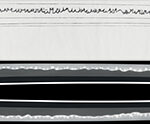 Katana:Gassan Unryushi Minamoto Sadakazu(NBTHK Hozon Token)
Katana:Gassan Unryushi Minamoto Sadakazu(NBTHK Hozon Token)
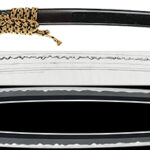 Katana: Gassan Sadakatsu Kinsaku (Kao) (NBTHK Hozon Token)
Katana: Gassan Sadakatsu Kinsaku (Kao) (NBTHK Hozon Token)
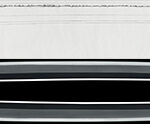 Katana: Naniwa ju Gassan Unryushi Sadakazu Kitae (Kokuin) (NBTHK Tokubetsu Hozon Token) (NBTHK Tokubetsu Kicho Token)
Katana: Naniwa ju Gassan Unryushi Sadakazu Kitae (Kokuin) (NBTHK Tokubetsu Hozon Token) (NBTHK Tokubetsu Kicho Token)




